
At 2am on 24 October 1917, Austro-German forces unleashed a devastating artillery attack against Italian troops defending land they’d captured in a long series of brutal and costly offensives. It was the opening salvo in a battle that would lead to one of the greatest military catastrophes of the First World War.
Over the next six hours, approximately two million shells pummelled the Italian line along the Isonzo River. After two-and-a-half years of a vicious war fought in a dramatic, often frozen landscape thousands of feet up in the clouds, the Italian defences were well-built. Earthworks and underground bunkers had been dynamited and drilled into the region’s mountainous terrain, while an elaborate trench system stretched across the valley floors below. Although these had proven resilient in the face of previous artillery attacks, they could do little to protect the Italian troops from the horror that now rained down upon them.
Approximately 10 percent of the shells fired that morning contained phosgene gas. Although the use of chemical weapons was commonplace on the Western Front, poison gas had never been used before in the so-called White War that raged in the Alps. The Italian high command had completely underestimated the power of this new terror weapon and its troops were ill-equipped to deal with it. The results were devastating.
At 8am, the Austro-German infantry assault began. As it advanced in a pincer movement to seize the river crossing at Caporetto, it encountered little resistance from what had been a numerically superior force. The gas attack had been so effective that hundreds of Italian troops now lay dead in their defences without having fired a shot. Thousands more, meanwhile, were fleeing the battlefield and heading west.
この記事は History of War の Issue 120 版に掲載されています。
7 日間の Magzter GOLD 無料トライアルを開始して、何千もの厳選されたプレミアム ストーリー、9,000 以上の雑誌や新聞にアクセスしてください。
すでに購読者です ? サインイン
この記事は History of War の Issue 120 版に掲載されています。
7 日間の Magzter GOLD 無料トライアルを開始して、何千もの厳選されたプレミアム ストーリー、9,000 以上の雑誌や新聞にアクセスしてください。
すでに購読者です? サインイン

NAUMACHIA TRUTH BEHIND ROME'S GLADIATOR SEA BATTLES
In their quest for evermore novel and bloody entertainment, the Romans staged enormous naval fights on artificial lakes
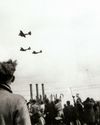
OPERATION MANNA
In late April 1945, millions of Dutch civilians were starving as Nazi retribution for the failed Operation Market Garden cut off supplies. eet as In response, Allied bombers launched a risky mission to air-drop food
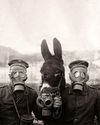
GASSING HITLER
Just a month before the end of WWI, the future Fuhrer was blinded by a British shell and invalided away from the frontline. Over a century later, has the artillery brigade that launched the fateful attack finally been identified?
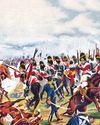
SALAMANCA
After years of largely defensive campaigning, Lieutenant General Arthur Wellesley went on the offensive against a French invasion of Andalusia

HUMBERT 'ROCKY'VERSACE
Early in the Vietnam War, a dedicated US Special Forces officer defied his merciless Viet Cong captors and inspired his fellow POWs to survive
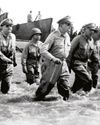
LEYTE 1944 SINKING THE RISING SUN
One of the more difficult island campaigns in WWII's Pacific Theatre saw a brutal months-long fight that exhausted Japan’s military strength

MAD DAWN
How technology transformed strategic thinking and military doctrine from the Cold War to the current day
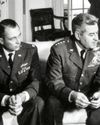
BRUSHES WITH ARMAGEDDON
Humanity came close to self-annihilation with the Cuban Missile Crisis, Broken Arrows’ and other nuclear near misses
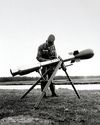
THE DEADLY RACE
How the road to peace led to an arms contest between the USA and USSR, with prototypes, proliferation and the world’s biggest bomb

THE MANHATTAN PROJECT
Einstein, Oppenheimer and the race to beat Hitler to the bomb. How a science project in the desert helped win a war